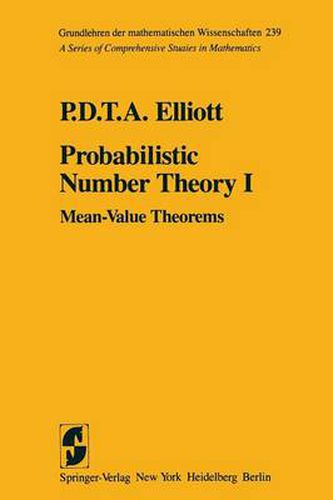Readings Newsletter
Become a Readings Member to make your shopping experience even easier.
Sign in or sign up for free!
You’re not far away from qualifying for FREE standard shipping within Australia
You’ve qualified for FREE standard shipping within Australia
The cart is loading…






This title is printed to order. This book may have been self-published. If so, we cannot guarantee the quality of the content. In the main most books will have gone through the editing process however some may not. We therefore suggest that you be aware of this before ordering this book. If in doubt check either the author or publisher’s details as we are unable to accept any returns unless they are faulty. Please contact us if you have any questions.
In 1791 Gauss made the following assertions (collected works, Vol. 10, p.ll, Teubner, Leipzig 1917): Primzahlen unter a ( = 00 ) a la Zahlen aus zwei Factoren lla* a la (warsch.) aus 3 Factoren 1 (lla)2a — 2 la et sic in info In more modern notation, let 1tk(X) denote the number of integers not exceeding x which are made up of k distinct prime factors, k = 1, 2, …Then his assertions amount to the asymptotic estimate x (log log X)k-l ( ) 1tk X ‘ – ’; ‘- — ::–:-’-,- (x-..oo). log x (k-1)! The case k = 1, known as the Prime Number Theorem, was independently established by Hadamard and de la Vallee Poussin in 1896, just over a hundred years later. The general case was deduced by Landau in 1900; it needs only an integration by parts. Nevertheless, one can scarcely say that Probabilistic Number Theory began with Gauss. In 1914 the Indian original mathematician Srinivasa Ramanujan arrived in England. Six years of his short life remained to him during which he wrote, amongst other things, five papers and two notes jointly with G. H. Hardy.
$9.00 standard shipping within Australia
FREE standard shipping within Australia for orders over $100.00
Express & International shipping calculated at checkout
This title is printed to order. This book may have been self-published. If so, we cannot guarantee the quality of the content. In the main most books will have gone through the editing process however some may not. We therefore suggest that you be aware of this before ordering this book. If in doubt check either the author or publisher’s details as we are unable to accept any returns unless they are faulty. Please contact us if you have any questions.
In 1791 Gauss made the following assertions (collected works, Vol. 10, p.ll, Teubner, Leipzig 1917): Primzahlen unter a ( = 00 ) a la Zahlen aus zwei Factoren lla* a la (warsch.) aus 3 Factoren 1 (lla)2a — 2 la et sic in info In more modern notation, let 1tk(X) denote the number of integers not exceeding x which are made up of k distinct prime factors, k = 1, 2, …Then his assertions amount to the asymptotic estimate x (log log X)k-l ( ) 1tk X ‘ – ’; ‘- — ::–:-’-,- (x-..oo). log x (k-1)! The case k = 1, known as the Prime Number Theorem, was independently established by Hadamard and de la Vallee Poussin in 1896, just over a hundred years later. The general case was deduced by Landau in 1900; it needs only an integration by parts. Nevertheless, one can scarcely say that Probabilistic Number Theory began with Gauss. In 1914 the Indian original mathematician Srinivasa Ramanujan arrived in England. Six years of his short life remained to him during which he wrote, amongst other things, five papers and two notes jointly with G. H. Hardy.